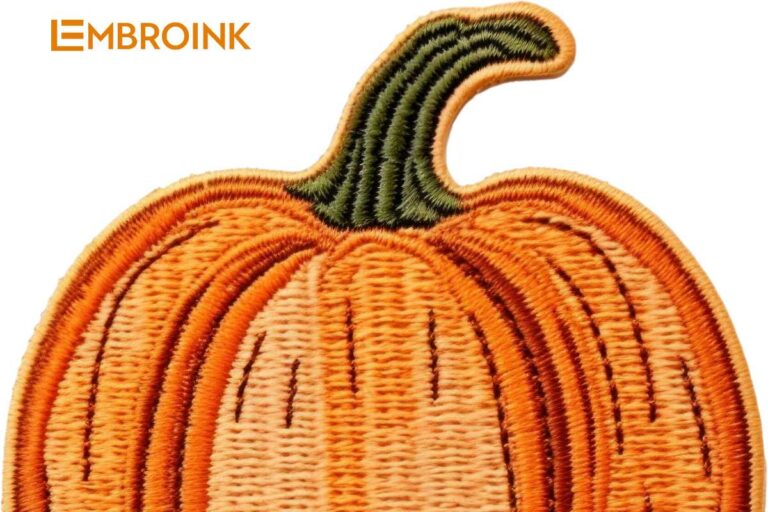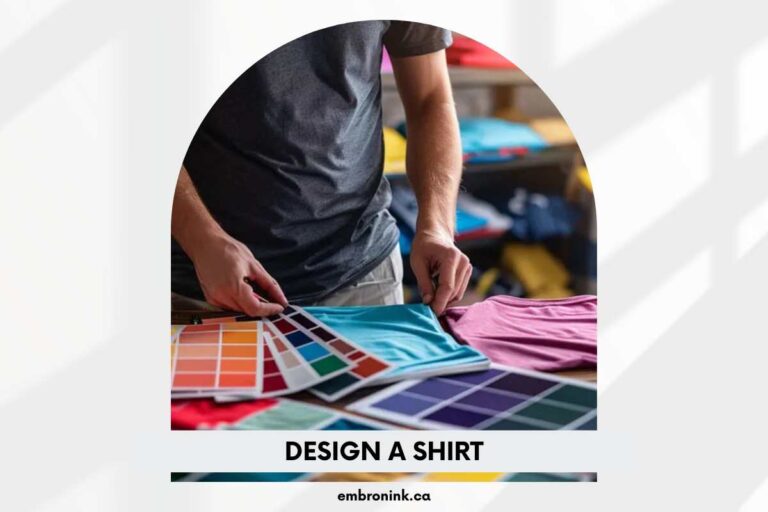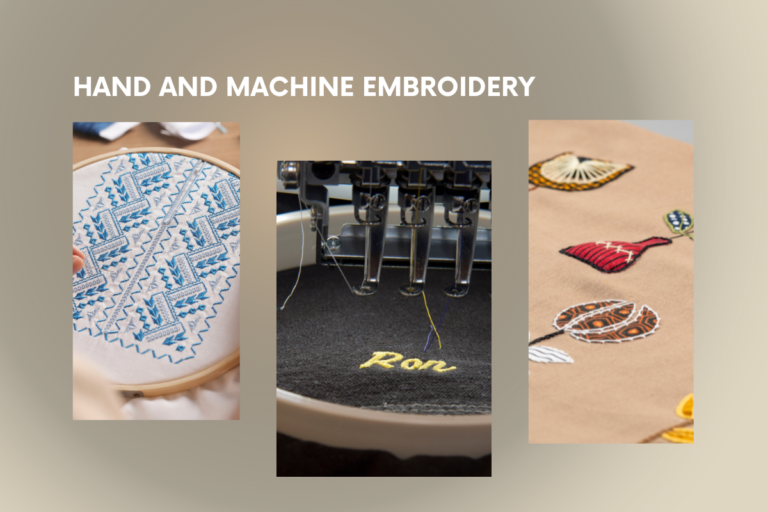Mastering embroidery: The ultimate 2024 guide
Embroidery, a timeless craft of embellishing fabric with intricate stitches, has evolved gracefully, blending tradition with modern trends. In 2024, this art form is experiencing a resurgence in popularity, fusing classic techniques with innovative twists. Whether you’re a beginner eager to start your embroidery journey or a seasoned enthusiast looking to refresh your skills, this ultimate guide for 2024 will serve as your compass. Explore with EmbroInk the enchanting world of threads, needles, and fabrics, and uncover the latest methods, designs, and inspirations reshaping the embroidery landscape. Let’s unravel the vibrant tapestry of this craft together.
Understanding the basics of embroidery
Before immersing yourself in the world of embroidery, it’s important to grasp the basics. So, what exactly is embroidery? At its heart, embroidery is the art of decorating fabric using a needle and thread. Whether you’re crafting delicate floral patterns or intricate scenes, the possibilities are boundless.
Embroidery boasts a rich history that traverses cultures and eras. From ancient civilizations to the Renaissance, artisans have employed embroidery to narrate stories and display their creativity. Each culture has its distinctive styles and techniques, making embroidery a captivating art form to explore.
One of the earliest known examples of embroidery hails from ancient Egypt. Egyptians used embroidery to embellish their clothing and household items, often depicting daily life or religious symbols. These intricate designs were created using “surface embroidery,” where threads are stitched onto the fabric’s surface.
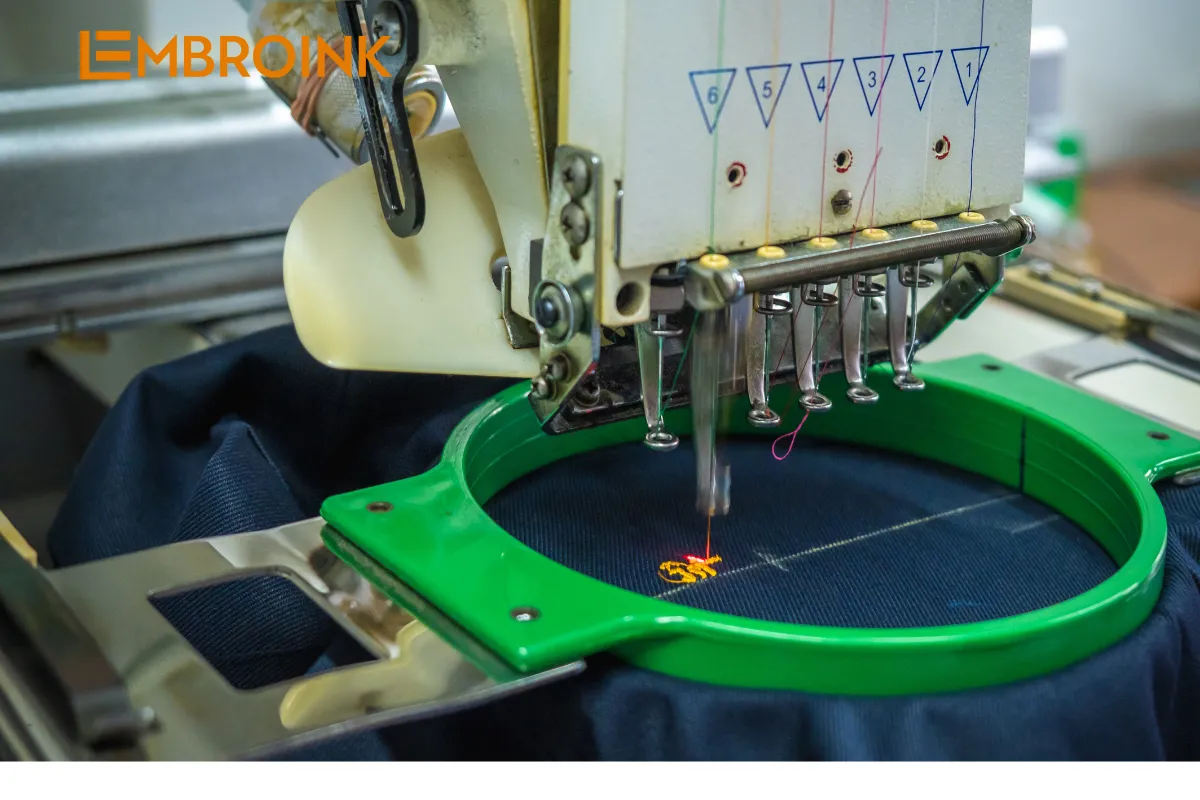
The value of embroidery
Embroidery is a timeless craft with a rich history that spans across various cultures and civilizations. Its enduring presence and ongoing popularity underscore its intrinsic value. Here’s a look at the importance and value of embroidery:
- Artistic Expression: Embroidery is a profound art form that allows for creative expression through unique designs, patterns, and color combinations. Each embroidered piece can reflect personal style, cultural heritage, or emotional sentiment.
- Historical Significance: Throughout history, embroidery has been used to document significant events, convey stories, and denote status. It has long been associated with luxury and sophistication, particularly when adorned with intricate designs.
- Durability and Quality: Embroidered designs are known for their durability. Unlike printed patterns that may fade over time, embroidery maintains its vibrancy and structure, making it perfect for items intended to last, such as heirloom pieces or formal garments.
- Personalization: Embroidery adds a personal touch to items. Whether it’s a monogrammed towel, a personalized baby blanket, or a custom logo on a company shirt, embroidery provides a polished and distinctive appearance that stands out.
- Tactile and Aesthetic Appeal: The raised texture of embroidery gives fabric a three-dimensional aspect, enhancing both its visual appeal and tactile quality. This dimensionality offers a unique look and feel that print or other methods cannot replicate.
- Versatility: Embroidery can be applied to a wide range of materials, from delicate silks to sturdy denim. Its versatility allows it to be used in various applications, including clothing, home decor, and ceremonial garments.
- Sustainability: Hand embroidery, in particular, is an eco-friendly craft. It doesn’t require energy-consuming machinery and provides a way to upcycle or refresh fabrics without the need for chemicals or dyes.
Getting started with embroidery
Embroidery can be a lucrative business venture, offering unique design possibilities. Here’s a guide to help you begin your embroidery journey:
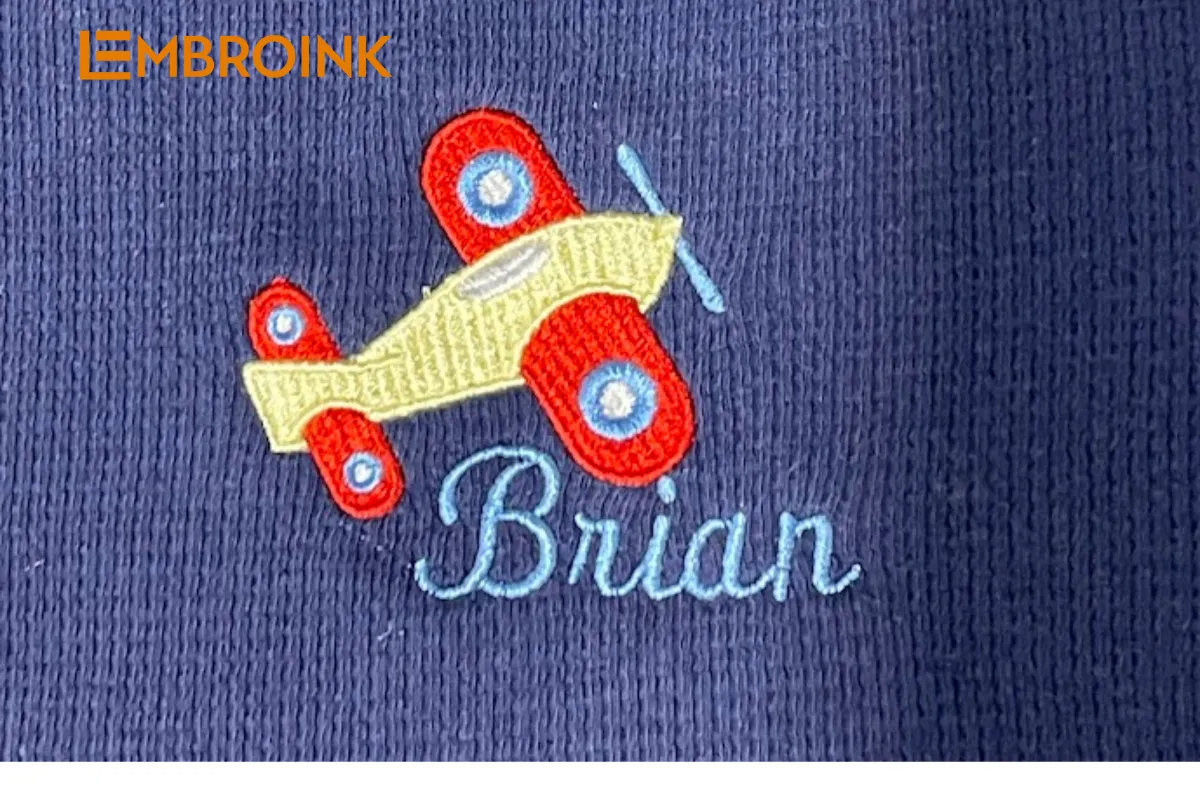
Embroidery machines: Key considerations
Volume and scale of production: Designed for larger order volumes, these machines can handle multiple pieces simultaneously, speeding up bulk production and enhancing efficiency. Ideal for startups, boutique businesses, or custom designs, single-head machines are suited for slower production, focusing on individualized orders.
Ease of use: Research various models and brands to find those known for user-friendliness. Look for machines with touchscreen controls, intuitive interfaces, and compatibility with popular design software for smoother design transfers and setup.
Budget Constraints: Embroidery machines vary in price. Set a budget that covers not only the machine but also long-term expenses. Consider additional costs like maintenance, replacement parts, staff training, and software licensing or updates.
Expandability and Versatility: Some machines offer modular options, allowing you to add more embroidery heads later. Think about your product range: will you focus on T-shirts or diverse items? Machines with flexible attachments and alignment options can accommodate various product lines.
Integrating embroidery into product line
Assess Demand:
- Use feedback forms, online surveys, or direct customer interactions to gauge interest in embroidered products.
- This helps ensure a market for your new product line and assists in forecasting initial order volumes.
Design Development:
- Collaborate with professional embroidery designers to adapt designs for stitching.
- Utilize embroidery design software to digitize designs for machine use.
Sampling:
- Conduct test runs of your designs to ensure they translate well onto fabric and make any necessary adjustments.
- Check for stitch consistency, color accuracy, and overall design integrity.
Pricing Strategy:
- The intricate nature of embroidery allows for a higher price point.
- Calculate production costs, including raw materials, machine maintenance, labor, and overheads, to set a competitive yet profitable price.
Marketing and Promotion:
- Use social media to showcase videos or images of the embroidery process, helping customers appreciate the craft.
- Highlight the durability, uniqueness, and texture of embroidered products in your marketing efforts to differentiate them.
Training and Skill Development:
- Invest in training programs or workshops for staff to ensure efficient machine operation.
- Regularly update skills to keep pace with technological advancements in embroidery.
Outsourcing for Embroidery Needs
If you’re considering adding embroidery to your product offerings but are hesitant about a full in-house commitment, outsourcing can be an excellent solution. Here’s why:
Quality Assurance: Reputable outsourcing partners adhere to rigorous quality checks. By working with experienced professionals, you ensure that the finished products meet your brand’s standards and expectations.
Cost-Efficiency: Outsourcing helps you avoid the substantial initial investment required for machinery, maintenance, and training. You pay only for the orders you place, allowing you to allocate resources to other areas of your business.
Variety: Outsourcing partners often provide a wide range of embroidery styles, from classic to modern. This diversity enables you to expand your product line without managing production in-house.
Turnaround Time: Outsourcing can help you accelerate order fulfillment, which is particularly useful when testing new markets or gauging demand.
In summary, outsourcing allows businesses to incorporate the elegance and appeal of embroidery into their products while reaching a wider market segment, all without the complexities of in-house production.
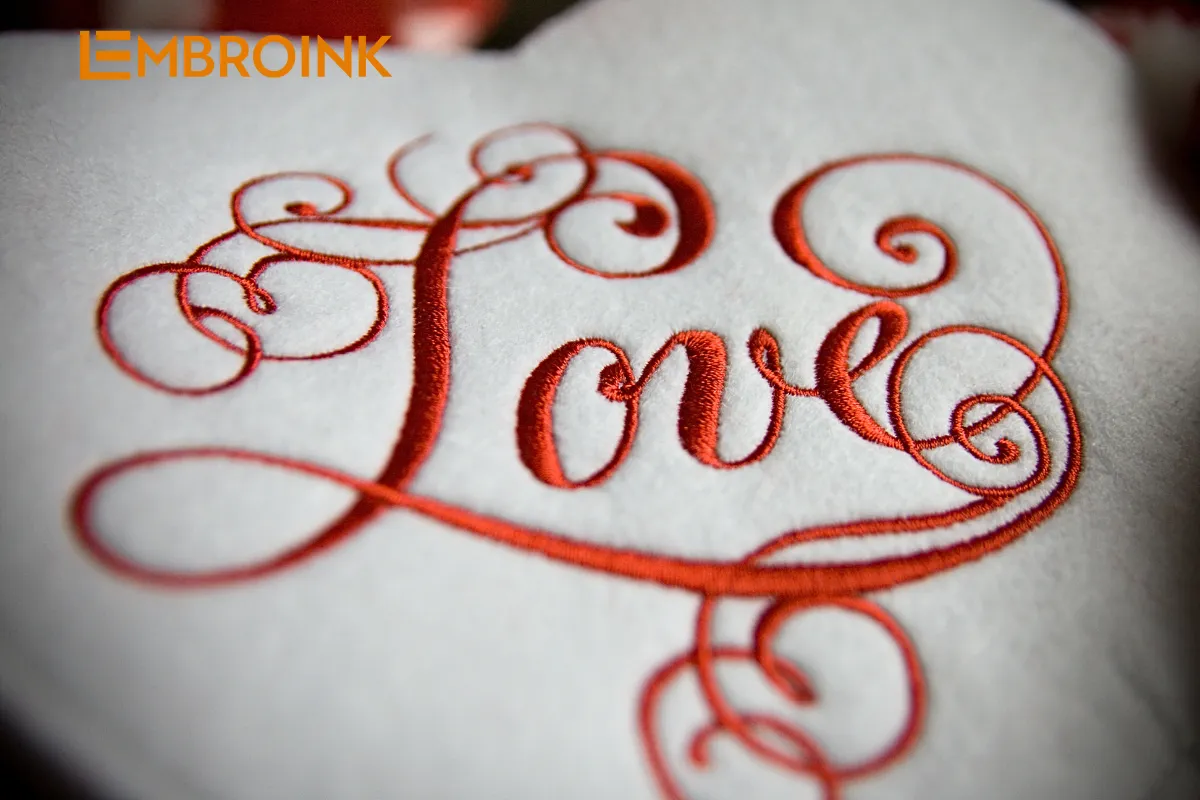
Profitability of Launching an Embroidery Business
Niche Identification: Identify a specific market or niche to target, such as personalized baby items, wedding accessories, or cultural patterns. A well-defined niche can differentiate your business and attract a dedicated customer base.
Cost Analysis: Calculate all expenses, including materials, equipment, and additional costs like outsourcing, website maintenance, or storefront rental. A thorough cost analysis will help you understand the financial requirements and potential profitability.
Pricing Strategy: Determine competitive yet profitable pricing for your products by considering your costs, time, and expertise. Ensure your prices reflect the quality of your work and meet market expectations.
Marketing and Branding: Develop a strong brand identity and employ digital marketing strategies such as social media, email campaigns, and e-commerce platforms to reach a wider audience. Effective marketing can enhance your visibility and attract potential customers.
Feedback and Adaptation: Engage with your customers to gather feedback and continuously adapt your offerings based on their needs and preferences. Staying responsive to market trends will help you maintain relevance and drive growth.
Embroidery, whether managed in-house or outsourced, offers significant potential for profitability. By mastering the craft, identifying your niche, and leveraging effective marketing, you can tap into a broad market for quality embroidered products. Success in this field requires dedication, careful planning, and a commitment to innovation.
Preparing to Embroider
Embroidery, the timeless art of decorating fabric with needle and thread, offers a delightful and creative outlet for personal expression. To ensure a successful and enjoyable embroidery experience, follow these essential steps:
Selecting the Perfect Fabric
Choosing the right fabric is crucial for a successful embroidery project. Popular choices among embroiderers include:
- Cotton: Known for its softness and breathability, cotton is versatile and easy to work with. It’s suitable for a wide range of embroidery techniques and designs.
- Linen: Valued for its strength and durability, linen holds intricate stitches well and provides a stable foundation for detailed embroidery.
Both cotton and linen are excellent choices, providing a solid base for your designs.
Transferring Your Design
After selecting your fabric, the next step is to transfer your design onto it. Several methods are available, including:
- Tracing: Place your design on a light box or use a tracing paper to outline it onto the fabric.
- Iron-On Transfers: Print your design onto special transfer paper and use an iron to transfer it to the fabric.
- Water-Soluble Pens: Draw your design directly onto the fabric with a water-soluble pen that disappears after washing.
Experiment with different methods to find the one that best suits your fabric and design complexity.
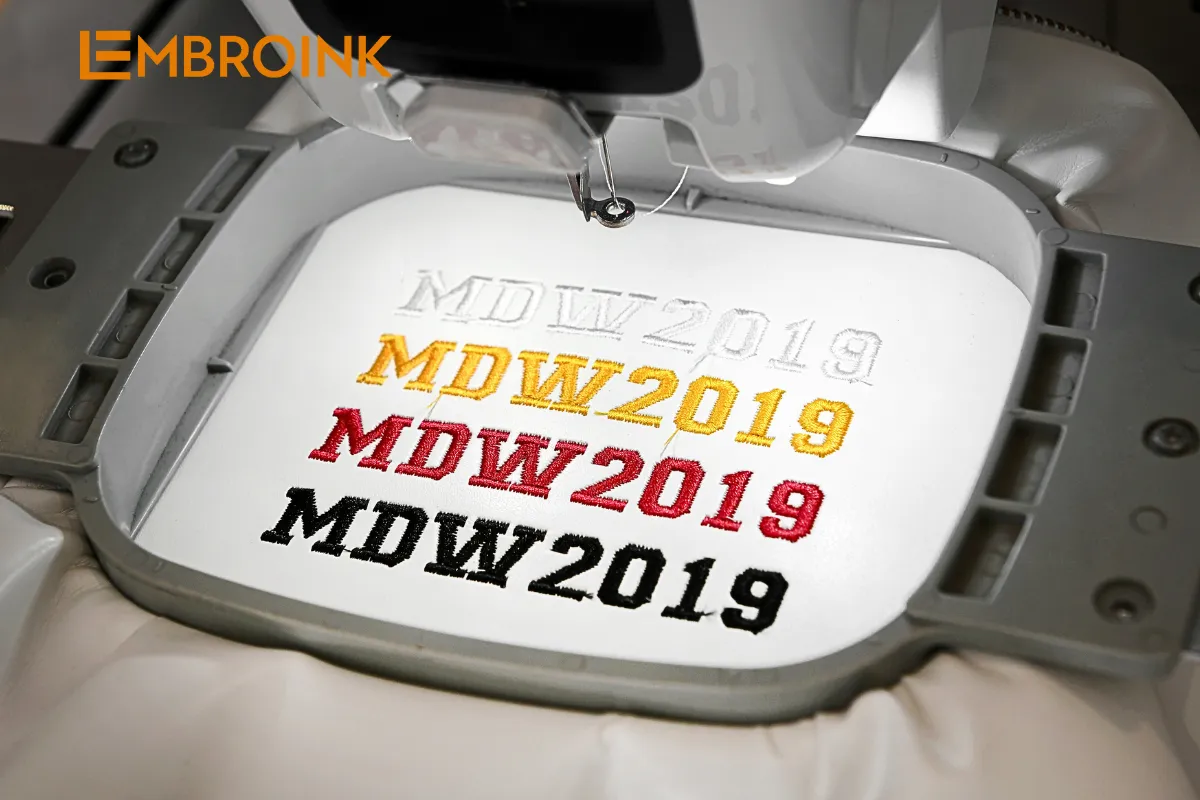
Threading your needle with care
Threading a needle may seem like a simple task, but it can pose a challenge for beginners. To make it easier, start by cutting a length of embroidery floss or thread, adjusting the thickness according to your stitching needs. Next, hold the end of the thread between your thumb and index finger and moisten it slightly to facilitate threading through the needle’s eye. Finally, gently insert the moistened end into the needle’s eye, taking your time and practicing to perfect this step.
Mastering basic stitches
Before starting your project, familiarize yourself with basic embroidery stitches. Practice simple stitches like:
- Backstitch: Ideal for outlines and details.
- Satin Stitch: Perfect for filling in shapes with a smooth, even finish.
- French Knots: Great for adding texture and small details.
With these preparations, you’ll be well-equipped to embark on your embroidery journey, creating beautiful and unique designs with confidence.
Outsourcing embroidery to EmbroInk
Outsourcing your embroidery needs to EmbroInk can be a smart choice if you want to create high-quality embroidered items without the need for in-house expertise or resources. Here’s why outsourcing to EmbroInk can be advantageous and how you can get started:
Benefits of outsourcing Embroidery Operations
Professional Quality: EmbroInk guarantees superior quality through its specialized equipment and experienced staff. This ensures that each embroidered item meets high standards.
Cost-Effective: By outsourcing, you avoid the significant upfront investment required for professional-grade embroidery machines. Additionally, it can be more economical in the long term, considering training, maintenance, and material costs.
Time-Saving: Handling embroidery, especially in large quantities, can be time-consuming. Outsourcing allows you to focus on other critical aspects of your business or personal commitments.
Volume Handling: EmbroInk is equipped to manage large orders efficiently, which would be challenging with personal-use machines.
Variety of Services: EmbroInk offers a range of services, including design consultation, an extensive selection of thread colors, various stitch techniques, and more, enhancing the quality and uniqueness of your products.
Consistency: Outsourcing ensures uniformity across all items, which is crucial for businesses requiring consistent branding.
Access to Latest Technology: Professional services like EmbroInk use cutting-edge technology and equipment, which may be too costly for individuals or small businesses. This results in better, faster, and more innovative embroidery designs.
Reduced Operational Hassles: Outsourcing eliminates the challenges associated with owning and operating embroidery machines, such as maintenance, repairs, and software updates.
Flexibility: Whether you need a single custom item or recurring embroidery work, outsourcing offers the flexibility to meet your needs without long-term commitments.
Reduced Risk: Outsourcing helps mitigate the risks associated with investing in machinery and hiring staff, especially if demand for embroidered products is inconsistent.
Steps to Outsource to EmbroInk
- Visit Our Official Website: Go to the EmbroInk website to explore our services and offerings.
- Browse Available Products: Choose from a range of products that you wish to customize with embroidery.
- Upload Your Design or Choose from Our Library: You can upload your own design or select from our extensive library of designs.
- Review the Design Mock-Up: Examine the design mock-up provided by EmbroInk and make any necessary adjustments.
- Place Your Order: Confirm and place your order. EmbroInk will handle everything from production to delivery, ensuring your embroidered items meet your expectations.
Outsourcing to EmbroInk can streamline your embroidery needs, providing high-quality, professional results without the complexities of managing production in-house.

Keeping Up with Embroidery Trends with EmbroInk
Embroidery has evolved from a timeless craft into a dynamic art form that reflects current trends and innovations. With EmbroInk, you can effortlessly stay ahead of these trends and bring fresh, contemporary designs to life.
- Innovative Design Solutions: EmbroInk offers a variety of print-on-demand design solutions that allow you to keep up with the latest embroidery trends. Our platform is designed to help businesses and creators adapt to and embrace emerging styles with ease.
- Eco-Friendly Production: We are committed to sustainability with our eco-friendly production processes. This not only supports environmental responsibility but also aligns with the growing consumer demand for sustainable products.
- Diverse Catalog: Whether you’re looking to create custom apparel, unique wall art, or personalized phone accessories, EmbroInk provides an extensive catalog of high-quality products. Our platform ensures that you can explore and incorporate the latest trends into your offerings seamlessly.
- Supporting Creators: At EmbroInk, we are dedicated to transforming creative visions into reality. Our innovative production and distribution platform is a cornerstone for many creators and entrepreneurs, helping them manifest their ideas and set their businesses apart.
- Becoming a Trendsetter: By partnering with EmbroInk, you position yourself at the forefront of the creator economy. As global e-commerce continues to expand, we aim to be a leading name within the creator movement, supporting your journey to success.
EmbroInk is here to help you navigate and thrive in the ever-evolving world of embroidery. Whether you’re looking to explore new trends or establish your unique mark in the industry, our platform is designed to support and elevate your creative endeavors. Explore our offerings today and start turning your embroidery dreams into reality!


